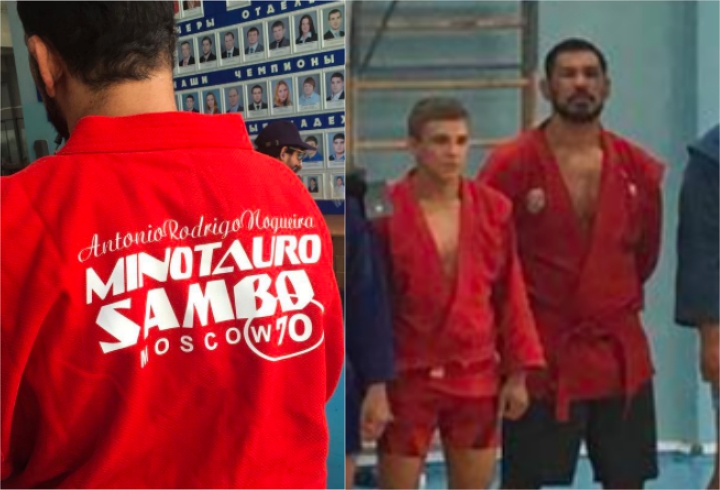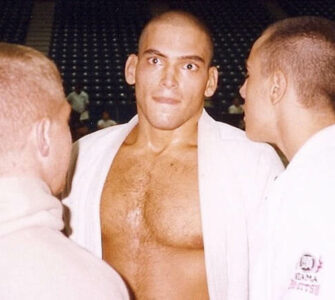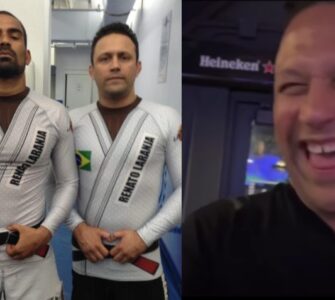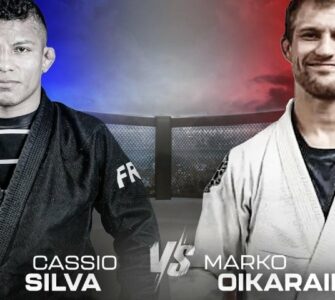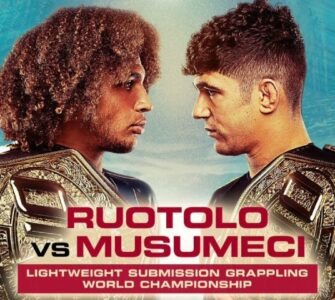Retired MMA legend Antonio Rodrigo Nogueira, better known as Minotauro was a few years ago in Russia, where he was conducting a PR campaign for the UFC for which he is an ambassador.
In Moscow, the BJJ black belt stopped by the famous Sambo school ‘Sambo 70‘ where he trained with the local talents and was even offered a custom made Sambo jacket or Kurtka.
Minotauro has faced fellow MMA legend Fedor Emelianenko, a multiple time Combat sambo champion, 3 times in Pride and lost twice with one no contest.
The Sambo-70 centre of sports education is a Russian martial arts training school that was founded in 1970 and has produced world, European and Russian champions in sambo, boxing, sumo, judo, gymnastics, karate, dance sport, and other sports. The centre includes a sports school and two general educational schools.
Sambo is a Russian martial art and combat sport. The word “SAMBO” is an acronymfor SAMozashchita Bez Oruzhiya, which literally translates as “self-defense without weapons”. Sambo is relatively modern since its development began in the early 1920s by the Soviet Red Army to improve their hand-to-hand combat abilities. It was intended to be a merger of the most effective techniques of other martial arts.
Assistindo o campeonato de Sambo Em Moscou na Russia !! Watching a Sambo Tournament in Moscow Russia !! A photo posted by Rodrigo Nogueira (@minotauromma) on
There are multiple competitive sport variations of Sambo (though Sambo techniques and principles can be applied to many other combat sports). Below are the main formats that are recognized by FIAS.
- Sport Sambo (Russian: Борьбa Самбо, Bor’ba Sambo, Sambo Wrestling (eng)) is stylistically similar to Olympic Freestyle Wrestling or Judo, but with some differences in rules, protocol, and uniform. For example, in contrast with judo, Sambo allows some types of leg locks, while not allowing chokeholds. It focuses on throwing, ground work and submissions, with (compared to Judo) very few restrictions on gripping and holds.
- Combat Sambo (Russian: Боевое Самбо, Boyevoye Sambo). Utilized and developed for the military, Combat Sambo resembles modern mixed martial arts, including extensive forms of striking and grappling. Combat Sambo allows punches, kicks, elbows, knees, headbutts and groin strikes. Competitors wear jackets as in sport sambo, but also hand protection and sometimes shin and head protection. The first FIAS World Combat Sambo Championships were held in 2001. The World Combat Sambo Federation, based in Russia, also sanctions international combat sambo events.
- Freestyle Sambo – Created and debuted by the American Sambo Association (ASA) in 2004. These rules differ from traditional Sport Sambo in that they allow choke holds and other submissions that are not permitted in Sport Sambo such as certain neck cranks and twisting foot locks. Freestyle Sambo, like all Sambo, focuses on throwing skills and fast ground work. No strikes are permitted in Freestyle Sambo. The ASA or “ASA” created this rule set in order to encourage non-Sambo practitioners from judo and jujutsu to participate in Sambo events.

